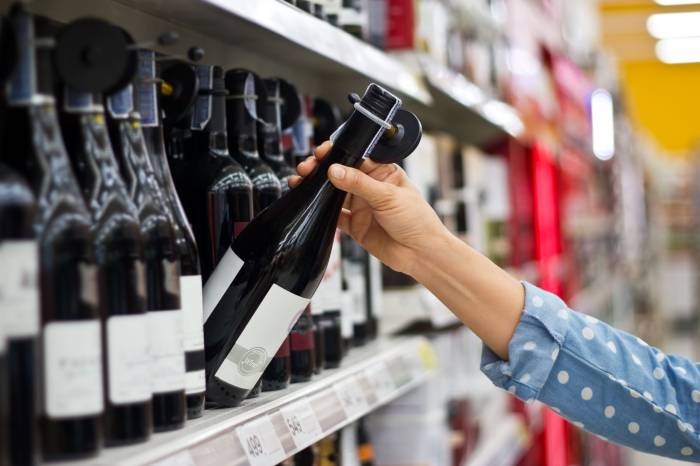Global Wine Consumption Plunges to 63-Year Low as U.S. Sales Drop 7.2% in 2024
Younger drinkers, climate change, and tariffs drive industry shakeup, with $24 billion in unsold U.S. wine inventory and rising bankruptcies
2025-11-27

Global wine consumption has dropped sharply over the past seven years, according to a recent report from Gordon Brothers, with worldwide demand falling from 245 million hectoliters in 2017 to 214.2 million hectoliters in 2024. This marks the lowest level of wine consumption since 1961. The United States, one of the world’s largest wine markets, is experiencing a similar trend. U.S. wine consumption is projected to decline by 7.2% in volume and 6.3% in sales by the end of 2024, continuing a four-year streak of falling sales.
The reasons behind this decline are complex and interconnected. Shifts in consumer preferences, demographic changes, and economic pressures are all playing a role. Many consumers are drinking less alcohol overall, with younger generations especially turning away from wine in favor of alternatives like energy drinks, hard seltzers, and hemp-infused beverages. Health concerns and tighter household budgets are also contributing to the drop in demand. A recent Gallup survey found that U.S. alcohol consumption is at its lowest point in nearly a century.
Demographic data shows that only 16% of Americans aged 21-34 are likely to bring wine to a party, compared to 58% of those over 65. Similar declines in wine consumption among young people have been reported in Canada, Australia, and New Zealand. In these countries, younger adults are not only drinking less wine but are also drinking less frequently than previous generations.
The industry is also facing significant financial headwinds. Producers are grappling with rising costs for labor, water, and barrels, while inventories have grown due to overproduction and shifting consumer tastes. In the U.S., wine inventories increased from just over $18 billion at the start of 2021 to nearly $24 billion by fall 2024. The ratio of inventory on hand to wine sold has risen by more than 20%, indicating that for every $100 in wine sales, $165 worth of wine sits unsold in storage.
Oversupply has led to falling prices for both bulk wine and grapes. In California, bulk wine prices have dropped from $30-$40 per gallon in early 2023 to just $10-$15 currently, with some wines failing to sell at all. The state’s 2025 harvest was the smallest in two decades, reflecting ongoing efforts by growers to reduce output and restore balance between supply and demand.
Climate change is adding further pressure on producers. Wildfires, droughts, and floods have limited yields in key regions such as California and Europe’s grand cru vineyards. Rising water costs and shortages of oak casks—driven partly by competition from the whiskey industry—are increasing production expenses worldwide. Labor shortages remain a persistent problem as well.
Trade policies are compounding these challenges. The U.S. has imposed a 15% tariff on European Union wines and a 10% tariff on imports from Australia and Argentina. South African producers face an even steeper 30% duty when selling into the U.S. market. These tariffs make imported wines more expensive for American consumers and create opportunities for domestic producers to gain market share.
Meanwhile, China’s tariffs on Australian wines between March 2021 and March 2024 caused Australian exports to China to plummet from nearly a third of Chinese imports to almost zero during that period. Although those tariffs have now been lifted, the initial surge in restocking appears to be slowing.
In response to these pressures, many vineyards are being uprooted or abandoned altogether. In California alone, there was a net loss of about 20,000 acres of vineyards over the past year as growers removed unprofitable vines or left them unharvested due to high input costs and low returns. Similar trends are occurring in Australia and New Zealand, where some growers are switching to alternative crops like almonds or oats.
The financial strain is leading to more bankruptcies among wineries and increased consolidation within the industry. Larger producers now account for about 40% of global wine revenue and are using this period as an opportunity to expand their holdings through acquisitions.
As the industry continues to adapt to these new realities—shifting consumer preferences, demographic changes, climate impacts, rising costs, trade barriers, and oversupply—both risks and opportunities will emerge for producers and lenders alike. For now, however, running a winery or related business remains more challenging than ever before as companies navigate an uncertain future shaped by powerful economic and cultural forces around the globe.
Founded in 2007, Vinetur® is a registered trademark of VGSC S.L. with a long history in the wine industry.
VGSC, S.L. with VAT number B70255591 is a spanish company legally registered in the Commercial Register of the city of Santiago de Compostela, with registration number: Bulletin 181, Reference 356049 in Volume 13, Page 107, Section 6, Sheet 45028, Entry 2.
Email: [email protected]
Headquarters and offices located in Vilagarcia de Arousa, Spain.